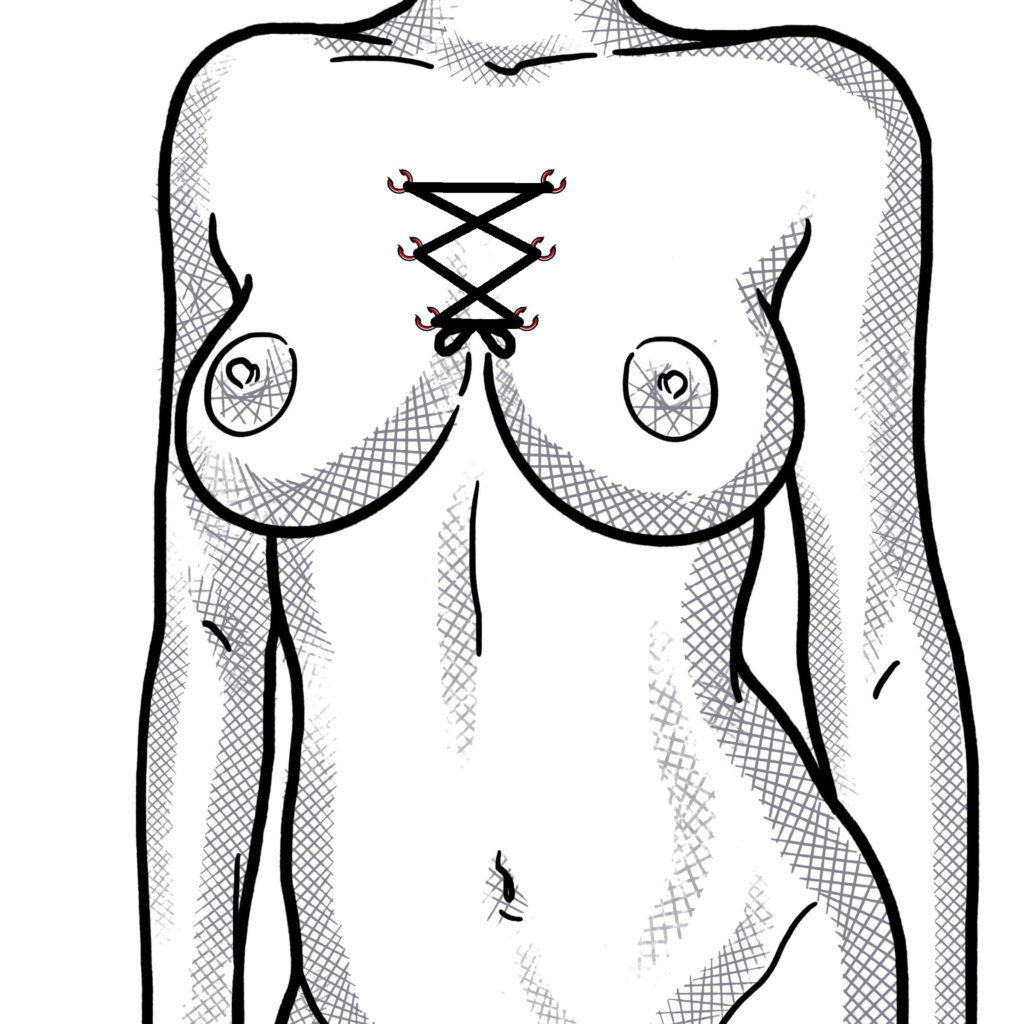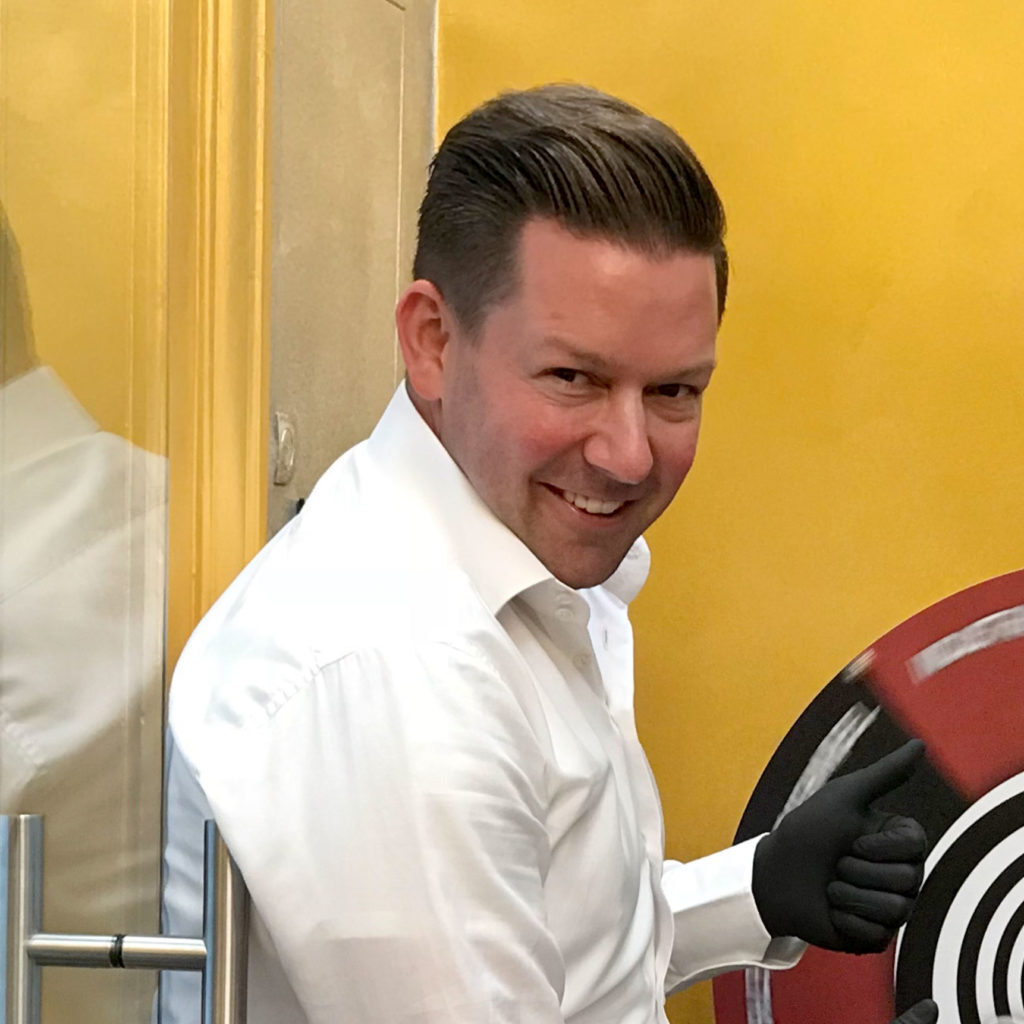Corset-Piercing

As the name suggests, the corset piercing comes from the woman’s garment worn around the torso.
This can be done using an array of piercings arranged in a similar fashion, which then allow you to tie a thread through them, as you would with a corset.

This is usually done along the back, but can also be performed laterally along the side.
Some women not only have it done on their back, along the side, from their rib cage to their hips, but also between their breasts, as seen on the illustration.
The piercing can be worn long-term, but should not be too tight.
Some customers get this piercing simply for fun, or for a special occasion such as a Life Ball or a photo shoot.
Because the corset piercing is simply an arrangement of surface piercings, the information regarding surface piercings also applies to corset piercings.
Healing:
Because the skin in the pierced area is under a certain amount of tension, the healing process can take a little longer than in other piercings.
Initially you should not put any bands, strings, or threads through the piercings, but allow the rings to heal properly.

The length of the piercings will also affect the time it takes to heal.
Generally we use a diameter of 1.2mm or 1.6mm.
The average time it takes for this type of piercing to heal is approx. 2 months.
Daily care should be taken during the healing phase.
Note:
The single-point-piercing should be touched as little as possible (wash and disinfect your hands if doing so), and exposed to as little irritation as possible as well. Do not remove or twist the piercing when cleaning, since this can further damage the wound canal. Use ProntoLind-Spray and ProntoLind-Gel twice a day for the first 2-3 weeks, then once a day for another 3 weeks.
Healing Process For All Single-Point-Piercings:

- Depending on the area, the initial healing of a surface piercing can take anywhere between 3 – 12 weeks, and up to 12 months for a complete recovery. A swelling of the lymph nodes in the first few weeks is completely normal.
- At the beginning, make sure you have a professional piercer switch your jewelry to another size of ball, bar, or ring.
- Never tape the piercing wound shut. Also avoid “wound” ointments, alcohol or chlorine-based disinfectants, hydrogen peroxide, and essential oils.
- Saunas, sunbeds, steam baths, and any kind of swimming in pools should be avoided for two weeks. Exposure to sea water is allowed after 7 days.
- Do not color or dye your hair for the first 6 weeks; use caution when combing your hair or visiting the hairdresser/barber.
- It is normal for there to be a wound secretion around the pierced area (initially clear, then yellowish-brown, not to be confused with pus) and for it to become sebaceous. This is part of the healing process, and can be removed with ProntoLind Spray, or when showering.
- A slight reddening and swelling of the skin and light post-treatment bleeding are normal in the first 10 days.
- When engaging in everyday tasks such as dressing, undressing, eating, shaving, applying cream, showering, washing, opening and closing cupboards, be careful that the piercing does not get caught in something and tear.
- Avoid lying down for too long or exerting undue pressure on the pierced area, as this can cause damage.
- If you see the piercing growing in a “crooked” direction, you can lightly twist it in the opposite direction and hold it there a few seconds in order to set it straight again.
Placement:
The depth of the piercing canal is essential to a successful surface piercing.
The rings are selected based on the wishes of the client and the length of the corsets.
You can use either 1.2mm or 1.6mm, but we recommend the latter.
Marc
and Piercer
Online reservation for the piercing of your choice
More than 40.000 hiqh-quality piercings and tools.



